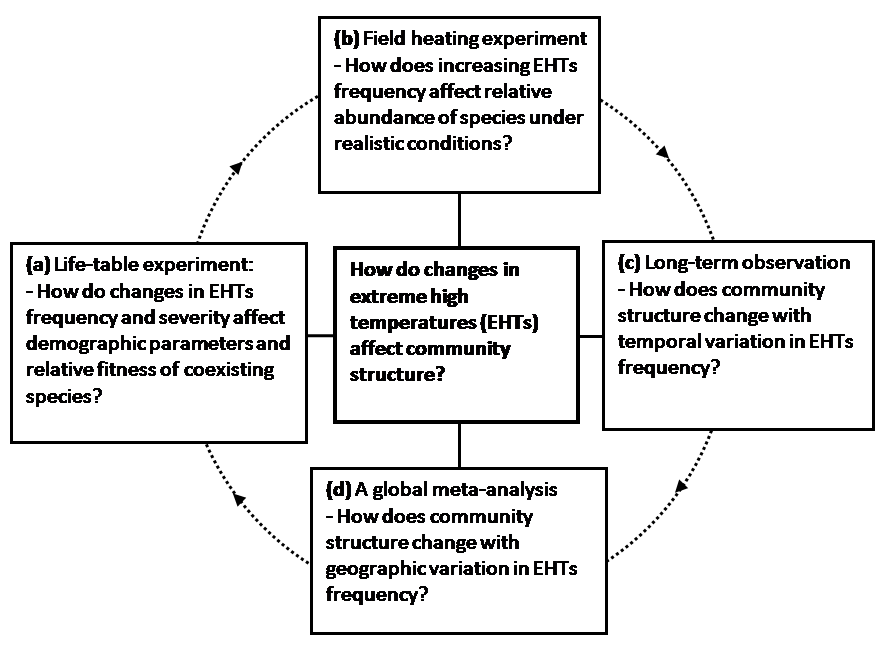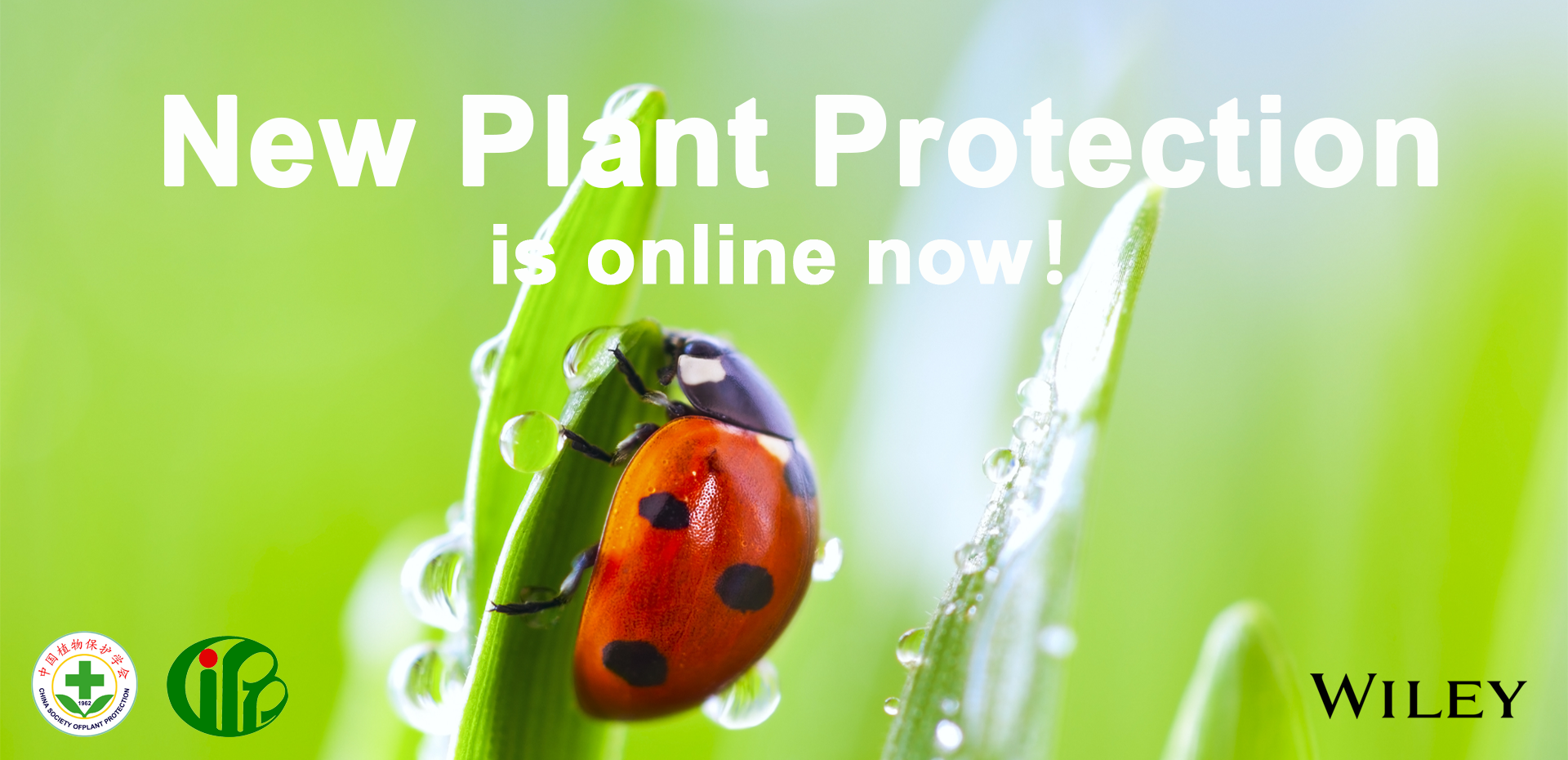Global climate change alters dominant species in natural communities
The article 'Extreme temperature events alter demographic rates, relative fitness, and community structure', by Prof. Chun-sen Ma’s group, Institute of Plant Protection (IPP), has been published on the journal Global Change Biology in May 2015. In a 6-year research, the authors found that global climate change broke the original balance of insect community structure, altered relative dominance of co-occurrence species, and led to a succession in dominant species. The authors argue that global warming has been altering dominant species in natural communities.
Global climate change has brought a series of selection pressures to organisms. Theoretically, the differential responses to climate change between organisms may result in shifts in relative dominance and consequently in community structure. In this work, the researchers used three co-occurrence cereal aphid species, Sitobion avenae (SA), Schizaphis graminum (SG) and Rhopalosiphum padi (RP), as a model system to reveal how do changes in extreme high temperatures (EHTs) affect relative dominance and community structure. In a life-table experiment, the authors found that changes in frequency and amplitude of EHTs had different effects on demographic rates such as development, survival, fecundity, etc. and relative fitness of the three species. Increased EHTs enhanced relative fitness of RP whereas reduced that of SA and SG. In a field heating experiment, increased EHTs altered aphid community structure, leading to an increase in relative dominance of RP whereas a decrease in relative dominance of SA and SG. Importantly, this change in relative fitness of species was consistent with significant changes in the relative dominance of species in natural communities in a 6-year-long field survey of natural populations. RP had higher relative dominance in years with frequent EHTs, while SA and SG had higher relative dominance in years with less EHTs. Finally, at a global spatial scale, the authors found the same relationship between relative abundance of species and frequency of EHTs. SA and SG dominated at higher latitudes with less EHTs, while RP was dominant species at lower latitudes with more EHTs.
The three aphid species prefer different parts of plant and lead to differential economic losses. The changes in their relative dominance are likely to affect the determination of their economic thresholds for pest control. Moreover, the focal species differ in their transmission efficiency of virus which may cause serious yield losses on cereals. Shifts in community structure of these species may therefore strongly affect virus co-infection rates in hosts and consequently overall disease prevalence. Cereal aphids are at the intermediate trophic cascades in cereal ecosystem, and the alteration of their community structure may therefore affect the “plant-insect-predator” system. This study also highlights the importance of understanding how extreme events affect the life history of species for predicting the impacts of climate change at the individual and community level, and emphasize the importance of using a broad range of approaches when studying climate change.

Four complementary approaches used in this study to determine how changes in extreme temperature events (EHTs) will affect structure of natural communities
-
 China-Laos Training Workshop on Integrated Management of Destructive Crop Pests and Diseases Successfully held in Laos
China-Laos Training Workshop on Integrated Management of Destructive Crop Pests and Diseases Successfully held in Laos -
 New Plant Protection: New challenge and new opportunity for plant protection
New Plant Protection: New challenge and new opportunity for plant protection -
 International and SELAMAT Conference on Pesticide Residue and Mycotoxin Contamination Held in Beijing
International and SELAMAT Conference on Pesticide Residue and Mycotoxin Contamination Held in Beijing -
 CAAS President Meets Chairman of ASEAN FAW Taskforce
CAAS President Meets Chairman of ASEAN FAW Taskforce
